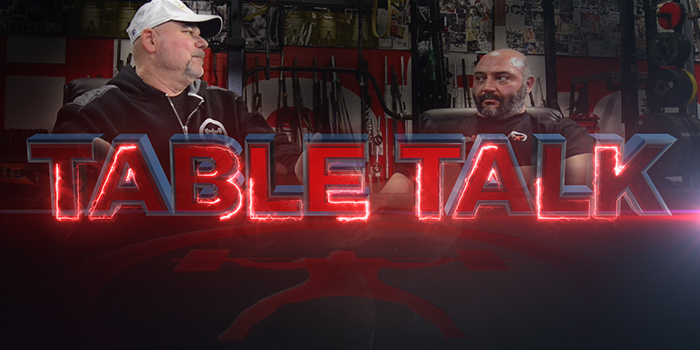
Today's topic for Table Talk combines two topics often discussed on elitefts.com, but rarely in conjunction with one another: max effort training and athlete training. Dave Tate and Nate Harvey respond directly to the following question from an elitefts reader:
How do you utilize max effort training for athletes?
To begin, Nate shares that when freshmen or new lifters come into his system for the first time, he begins by having them do non-barbell dynamic work or speed work. This phase will last for the first three to four weeks. This enables Nate and his staff to teach these new athletes how to properly perform the movements while also training the ability to explode from a stopped position — the static-to-dynamic capability. From that point he will then have them start using a bar and helping them become more proficient at the movement under load. As the technical proficiency improves, eight, five, three, and one-rep maxes are introduced.
Nate also mentions a number of other factors that must be considered when designing max effort work for athletes. For instance, swimmers often don't have the ability to strain with a bar on their back, which makes max effort squat movements ill-advised. However, if you have swimmers do pin pulls instead, they're able to strain hard without the issues that arise in the squat.
Dave then responds by saying that strength coaches and athletes must first understand the purpose of max effort work prior to putting it into their program. The purpose of max effort work is and always has been to teach a person to strain. These must be compound movements and must have some dynamic correspondence to what will carryover to the athlete's sports performance. This does not necessarily mean they must be sports-specific movements, but they must build performance qualities that are important for the given athlete's sport.
To explain this, Dave uses the example of powerlifters. For powerlifters, accounting for their given sport demands means doing lifts that are very close to the competition squat, bench press, and deadlift. The further away from the competition movements the max effort exercises are, the less effective they will be for helping new lifters. Similarly, for athletes, you don't want to use awkward, unusual movements that will put the athletes in a position they will likely never be in again. It is important to scale the exercise selection based not only on the experience level of the athlete but also on their respective sport.










